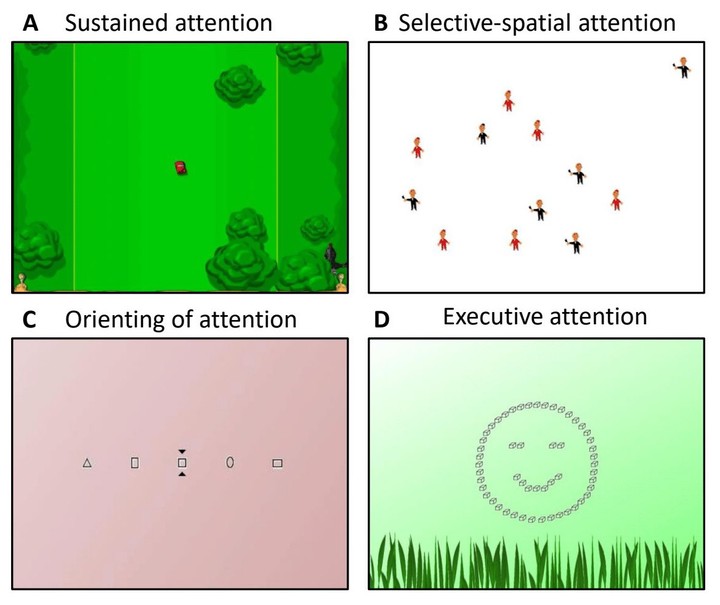Computerized progressive attention training (CPAT) vs. active control in adults with ADHD

Abstract
Higher education students with ADHD cope with various academic obstacles such as difficulty to sustain attention while studying and deficient ability to focus attention effectively on academic tasks. Shalev et al. (Child Neuropsychology, 13(4), 382–388, 2007) have developed a computerized progressive attentional training (CPAT) program for children with ADHD, which is composed of four sets of structured tasks designed to uniquely activate various attentional functions: sustained-, selective-spatial, orienting-, and executive-attention. The goal of the present study was to evaluate the effect of the CPAT vs. an active control training program on improving attention functioning among high functioning adults with ADHD. Thirty participants, randomly assigned either to the CPAT or to the active control (computer games; CG) groups, completed 16 1-h training sessions across 8 weeks. Attention functioning was assessed using both objective and subjective tools three times: before the intervention (pre-test), after the intervention (post-test), and at follow-up (2–3 months later). Participants in the CPAT group exhibited significantly greater improvements in selective-spatial attention and in executive attention tasks (that were different than the attention training tasks) compared to participants in the CG group, and these gains were maintained at follow-up. These results provide strong evidence for near transfer effects of the CPAT. In addition, modest improvement in sustained attention was recorded in both training groups. However, analyses of the self-reported ADHD symptoms across the three points of assessment showed no change in either group. Future studies with larger samples should replicate and elaborate the present findings in order to assess whether the near transfer effects of the CPAT program could be translated to everyday functioning in high functioning adults with ADHD.